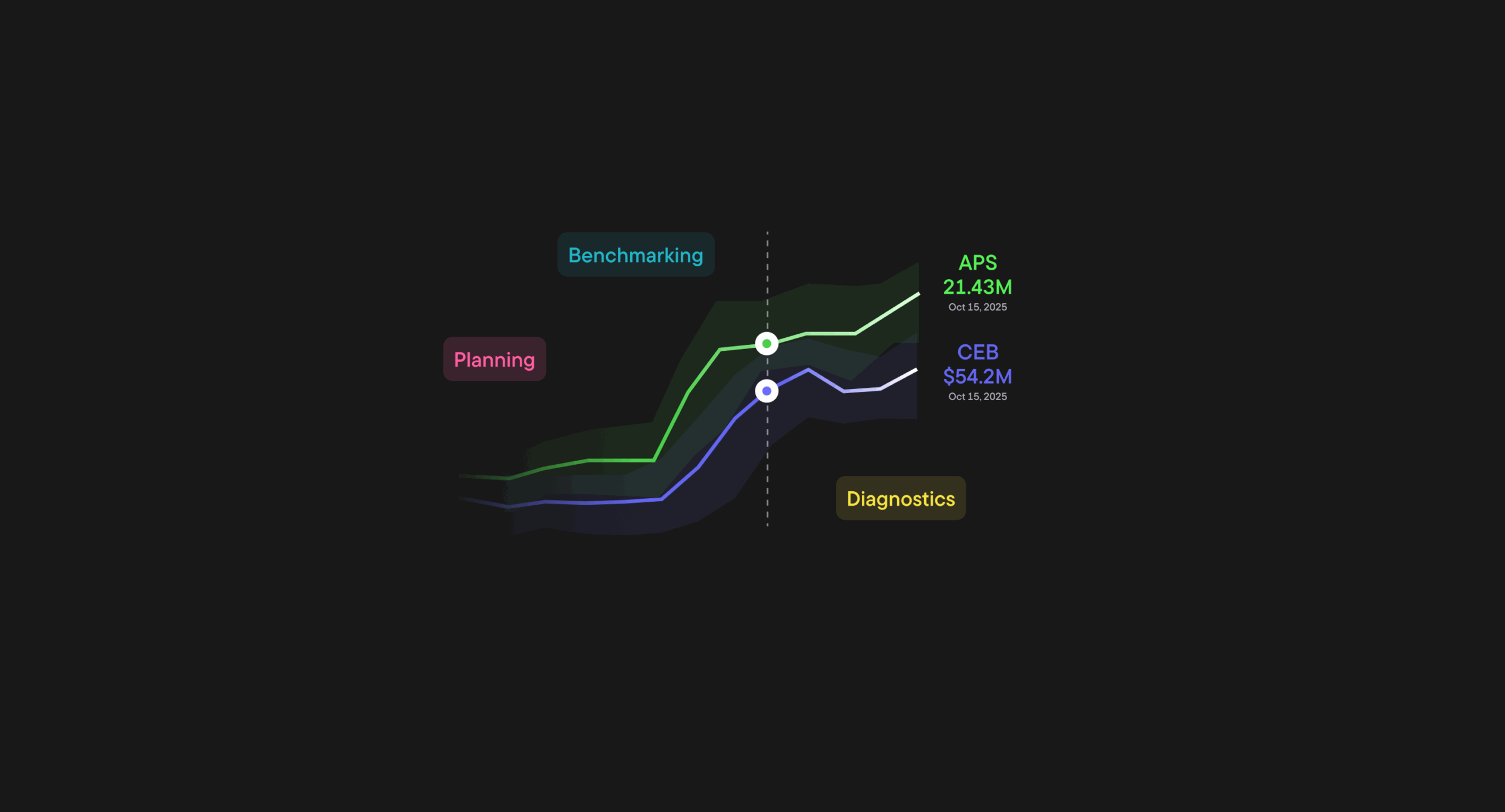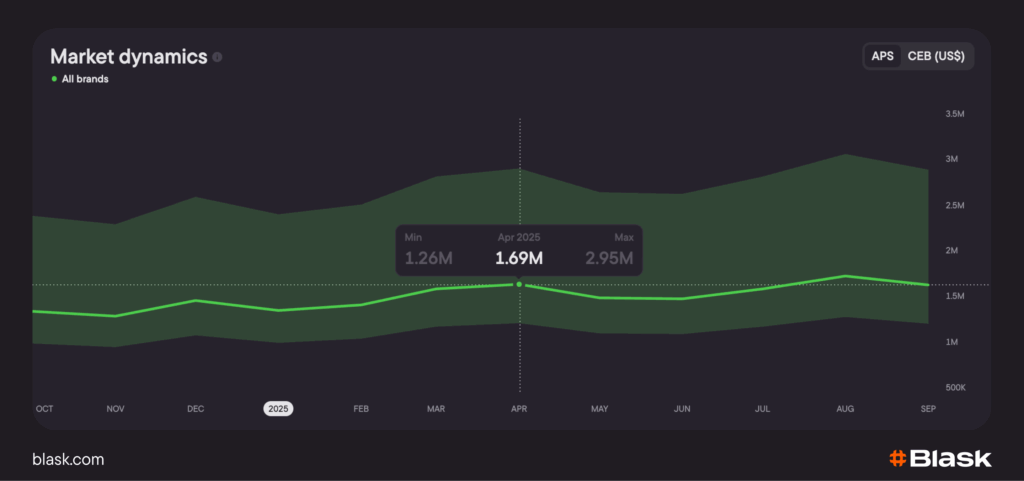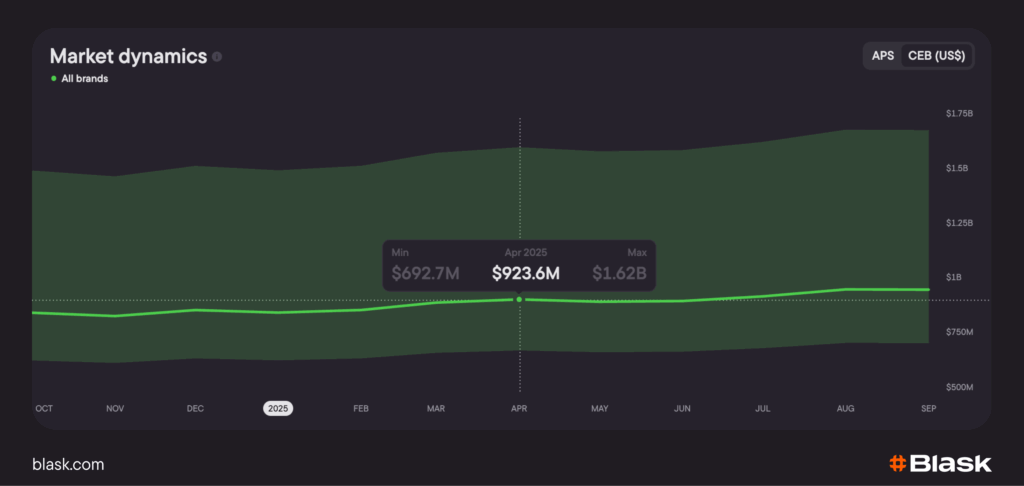
In iGaming, success isn’t just about clicks, traffic, or even deposits. These are operational numbers, but they don’t tell you how strong your brand really is, or whether it’s performing to its full market potential.
That’s where Blask’s proprietary metrics, APS (Acquisition Power Score) and CEB (Competitive Earning Baseline), come in.
They’re not designed to replace your financial dashboards or SEO tools. Instead, they help you see the “brand layer” of performance; how awareness, trust, and market position translate into real business outcomes.
Let’s break it down.
From awareness to action: the role of APS

APS (Acquisition Power Score) measures how effectively a brand can convert its accumulated brand strength into new customers.
It’s not about how many sign-ups or FTDs (first-time deposits) you recorded last week. Instead, APS answers a deeper question:
“Given the level of attention and recognition my brand has built, how much customer acquisition should I realistically expect?”
In Blask, APS is a benchmark, not a tally. It shows whether your brand is using its full potential to attract players.
For example:
- A brand with strong visibility and recall (high Brand Accumulated Power) but a weak APS may be underperforming in acquisition, losing users who already know it exists.
- A smaller brand with modest awareness but a rising APS might be punching above its weight, effectively converting curiosity into sign-ups and deposits.
💡 APS turns brand awareness into actionable performance intelligence, a bridge between marketing and growth.
Measuring market reality: What CEB tells you

If APS shows your potential to attract users, CEB (Competitive Earning Baseline) shows your potential to earn money from the market you’re in.
It answers:
“Given my brand’s strength and the level of competition, how much revenue should I be making?”
CEB projects a realistic revenue baseline, calculated from market-level behavioral data and historical brand performance. It doesn’t try to match your internal GGR, and it shouldn’t.
Instead, it serves as an external benchmark, helping you see if your brand’s real earnings are aligned with what’s statistically achievable in that market.
If your brand’s actual revenue falls below its CEB range, it means your marketing or retention efforts aren’t capitalizing on existing brand power.
If it’s above, congratulations, you’re outperforming the market average.
APS + CEB: Why they work together
APS and CEB are designed to be read together; one focuses on users, the other on money.
Combined, they answer the two questions that matter most for any iGaming brand:
- Are we attracting as many players as our brand strength allows?
- Are we earning as much as our market position enables?
This dual view helps operators and affiliate brands move beyond vanity metrics and into strategic brand performance planning.
It also gives marketing directors — often balancing between creative budgets and hard KPIs — a realistic framework for goal-setting and evaluation.
How to use these metrics
You can think of APS and CEB as your market compass.

Here’s how brands use them in practice:
- Strategic Planning: Set realistic acquisition and revenue targets grounded in market data.
- Performance Diagnostics: Identify whether weak results come from awareness gaps or conversion inefficiency.
- Team Benchmarking: Give marketing and product teams a shared performance baseline that’s independent of spend or media channel.
The key idea: these metrics don’t measure what you’ve spent, they measure what your brand could achieve given its real position in players’ minds.
🚀 Discover: 30 Ways Blask Games empowers iGaming professionals
Beyond iGaming
Although born in iGaming, APS and CEB are not tied to any single industry. They can model brand potential anywhere collective consumer behavior matters; from fashion to fintech.
The logic remains the same:
Brand power fuels acquisition.
Acquisition fuels revenue.
And Blask helps you quantify both. Objectively, and in context.
In short:
- APS shows how much user growth your brand potential can generate.
- CEB shows how much revenue your market position should bring.
- Together, they reveal whether your brand is performing as strongly as it looks.
🚀 See your APS & CEB in Blask
Curious how your brand performs against its true potential?
Open your Blask dashboard, or request a demo, and see your APS and CEB in real time.

